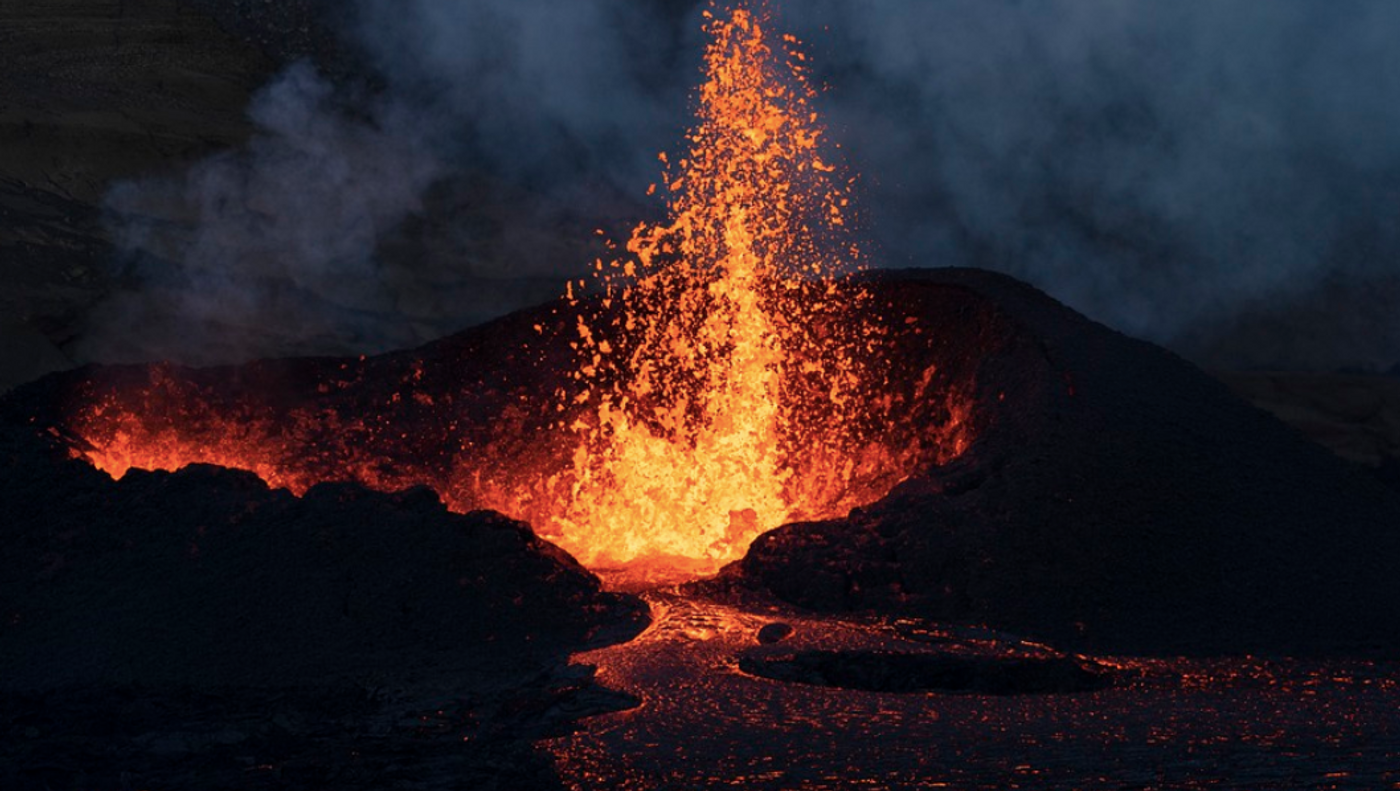A Volcano in Iceland Erupts
On Monday, December 18, 2023 a volcano erupted about four kilometers (2.5 miles) away from a town called Grindavik in southwestern Iceland, the land of fire and ice. The region around the volcano was evacuated weeks ago as a precaution when seismic activity increased and started to cause some damage to local homes. The eruption created a lengthy fissure in the ground, which is about four kilometers long, but it has been weakening since the ground opened. As of December 20 at 17:00 UTC, the Iceland Meteorological Office (IMO) noted that, "he vigor of the eruption continues to diminish." But scientists don't know when it will end.
The Svartsengi geothermal plant is only about two kilometers away from the eruption, and scientists were warning officials to take steps to secure the plant before the eruption. Luckily, the advice was heeded, and reinforcements were built around Svartsengi, which supplies electricity and water to about 30,000 people in the area. Officials have stated that the lava flow is not threatening infrastructure near the volcano, and it is moving in a helpful direction.
"We also know that the flow of lava can change the surrounding landscape, so this can change with short notice,'' acknowledged Iceland's Prime Minister Katrin Jakobsdottir.
Before the eruption occurred, the land around it had started to move; it was raised around 35 centimeters prior to the opening of a magma channel on November 10, 2023. Now, the land in Svartsengi has subsided over five centimeters.
The IMO said today that while seismic activity is remaining steady, new deformations have not happened at the site. This has led them to conclude that additional eruptions near Grindavik are less likely.
After the local population was evacuated a few weeks ago, others were warned to stay away from the site of the eruption. The Blue Lagoon is one of Iceland's most popular tourist attractions, and it's not far from the volcano. It has been temporarily closed for the past month after seismic activity began to increase and there were signs of a possible eruption.
Lava flowing from a volcano can hit the ground at temperatures of about 2,000 degrees Fahrenheit (1093C). When it moves downhill, it can pick up a lot of speed and may be as quick as a fast runner. However, the distance that lava will travel and how fast it cools down are more difficult to ascertain, noted Daniel Douglass, a teaching professor in marine and environmental sciences at Northeastern University.
While Douglass added that local damage is possible, there is no expectation of a "catastrophic burying of half of Iceland in volcanic dust."
Experts are stressing that people should heed advice and stay away from the active volcano. Matthew Watson, a professor of volcanoes and climate at the University of Bristol, said that rapid changes like new eruptions can put people in danger quickly.
Sources: Northeastern University, Phys.org via The Associated Press, AFP









